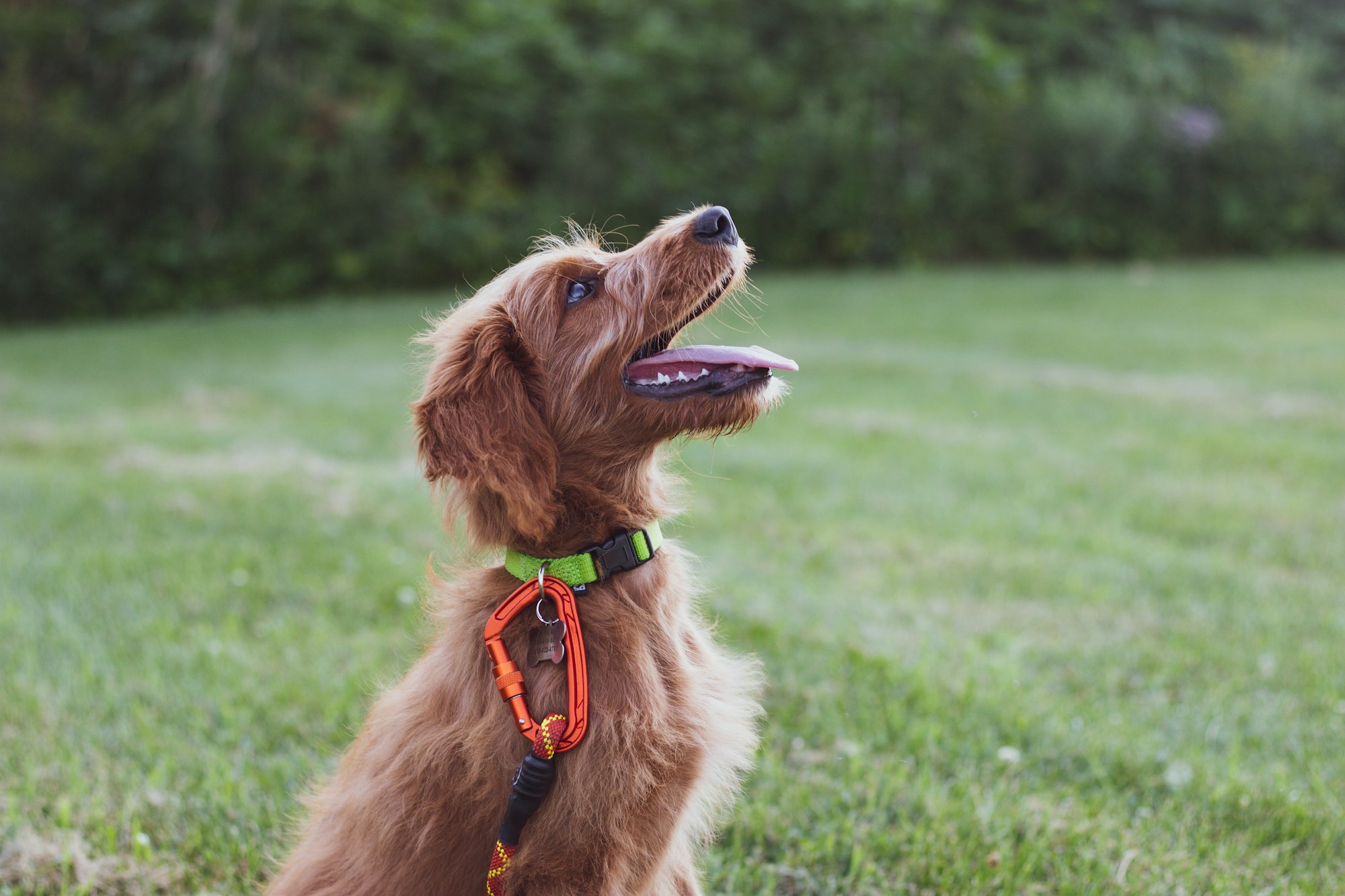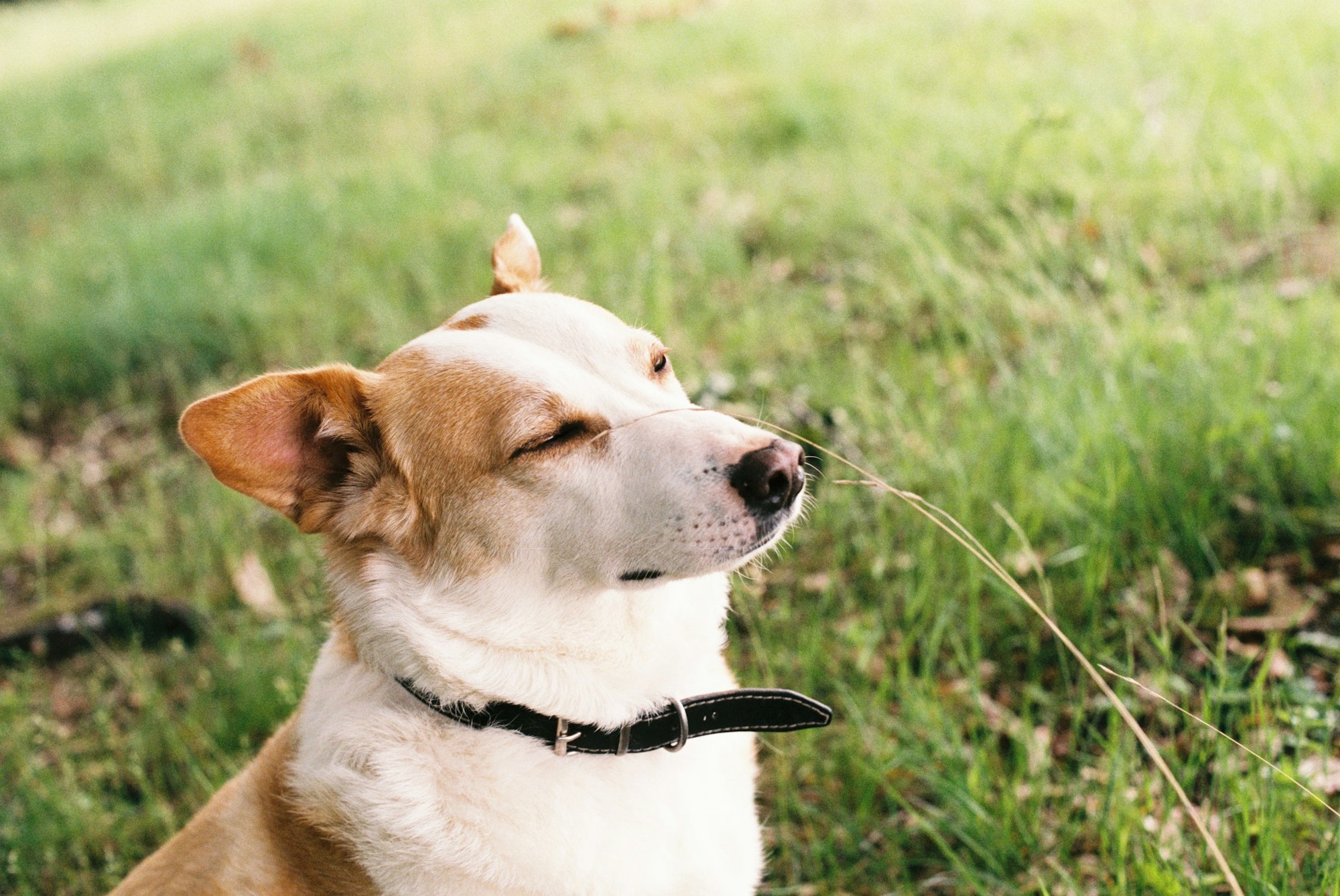Clicker training, a positive reinforcement technique, has revolutionized the world of animal training with its simplicity, effectiveness, and emphasis on building a strong bond between trainer and trainee. Rooted in the principles of behavioral science, this method leverages the power of association, ensuring that animals not only obey commands but do so willingly and enthusiastically.
Whether you're new to the world of training or seeking to refine your methods, understanding the basics of clicker training can provide a foundation for a harmonious and productive relationship with your animal companion. Welcome to 'Mastering the Basics: An Intro to Clicker Training Techniques', your comprehensive guide to tapping into the potential of this remarkable approach.
Why Consider Clicker Training?
Clicker training utilizes a distinct sound, typically a 'click', to signal to an animal that they've done something correctly. This sound is followed by a treat or reward, creating a positive association. This method stands out due to its positive reinforcement approach.
For instance, consider Sarah. She recently adopted a lively Golden Retriever named Max. Eager to teach Max basic commands, Sarah dabbled in traditional training methods but found Max unresponsive and even stressed. That's when she stumbled upon clicker training techniques. Within weeks, Max was following commands and showcasing behaviors Sarah once thought impossible.
How Clicker Training Works
It's all based on the principles of operant conditioning. When your dog does something right, you immediately "click" and then reward. This immediate feedback helps the dog link their action with the reward, encouraging them to repeat the behavior.
Imagine teaching a child to ride a bike. Every time they balance without support, you give them a high-five. Soon, they associate balancing with positive feedback and try harder to maintain balance.
Getting Started
There are various types of clickers available. Some have a softer sound, while others might be louder. The type doesn't matter as much as consistency does. Stick to one clicker and sound throughout your training.
Find a quiet space, free from distractions. This could be your backyard or a quiet room. The key is ensuring your pet can focus solely on the training.
Before teaching commands, help your pet understand the clicker's meaning. Click and then immediately give a treat. Do this multiple times until they associate the sound with a reward.
Real-Life Clicker Training
Jane had a poodle, Bella, that loved to chew on furniture. Instead of scolding Bella, Jane used clicker training. Every time Bella approached furniture but didn't chew, Jane clicked and rewarded her. Over time, Bella's destructive behavior diminished.
The Magic Behind Positive Reinforcement
Positive reinforcement is encouraging desired behavior by offering a reward. It's like giving a child candy for good grades. For animals, especially dogs, this method is more effective than punishment. It builds trust and understanding.
Speaking of trust and understanding, when it comes to caring for our pets, it's essential to provide them with the best. For instance, incorporating dog probiotics into their diet can enhance their gut health. Similarly, for those anxious nights, melatonin for dogs can be a lifesaver. When it's medication time, pill pockets for dogs make the process less stressful. And always be on the lookout for flea bites on dogs; early detection can prevent further complications. Moreover, while you're at it, check those dew claws for any issues. And if your pet faces severe health concerns, considering advanced treatments like dogs stem cell therapy might be worthwhile.
Advanced Techniques and Pitfalls to Avoid
Once you've grasped the basics, there's so much more to explore in clicker training. You can teach advanced commands, tricks, or even guide behavior modifications.
However, a common pitfall is inconsistency. Remember, consistency in sound, reward, and command is vital. If you click without rewarding or give mixed signals, it can confuse your pet.
Expanding Your Clicker Training Horizon
As your furry friend progresses in their training, the techniques and rewards can evolve, creating a dynamic learning environment that remains engaging and exciting.
Exploring Complex Commands and Tricks
After mastering the basics, you can introduce complex behaviors and tricks. Want your dog to fetch your slippers? Or perhaps roll over on command? Clicker training can make that a reality. Let’s dive into how:
Sequential Training
Often, complex behaviors are a combination of simpler ones. By training each small behavior and then combining them, you can guide your dog to understand intricate commands. For instance, teaching a dog to fetch involves multiple steps: grabbing the object, holding it, coming to you, and then releasing it. Each of these can be trained separately before merging them into one fluid motion.
Reinforcement Variety
While treats are a great start, dogs, much like humans, love variety. Try alternating between treats, verbal praises, or even playtime. This not only keeps your dog engaged but also ensures they don't become overly dependent on a single type of reward.

Common Misconceptions
Many people assume clicker training is only for dogs. This is far from the truth. Cats, birds, and even marine animals have been successfully trained using this method. The universality of the clicker training technique lies in its simplicity and positive approach, making it adaptable for various animals.
Tackling Challenges
Every pet is unique, bringing along their own set of challenges. You might find that while your neighbor’s dog responded brilliantly to clicker training within days, your furry friend is taking a bit longer.
Patience is your best ally here. It's important to note that the pace of learning can vary. What's crucial is maintaining a positive atmosphere, ensuring your pet remains stress-free and receptive.
For instance, if you notice signs of anxiety or unease, like excessive panting or avoidance, it might be worth exploring calming aids. Anecdotal evidence suggests that melatonin for dogs can assist in such scenarios.
Real-life Success: From Chaos to Calm
Meet Dylan, a Border Collie with boundless energy. His owner, Laura, often found herself at her wit's end, trying to manage his unbridled enthusiasm. He’d jump onto guests, causing quite a few coffee spills.
But with clicker training, Dylan transformed. Laura began by teaching him the 'sit' command every time the doorbell rang. Slowly, Dylan began associating guests' arrival with sitting and waiting calmly. It was a game-changer. The spills stopped, and Dylan earned many compliments for his impeccable manners.
The Science Behind the Click
While it's easy to get swept up in the magic of clicker training's outcomes, understanding the science behind it can further enhance your training approach.
The Power of Association
Our pets live in a world governed by associations. A doorbell might signal a visitor, the rustle of a bag might signify treats, and the jingle of car keys could mean it's time for a ride. Clicker training capitalizes on this associative learning. The "click" becomes an unequivocal signal of a job well done, devoid of the varied tones and emotions that human voices might convey.
Tailoring the Technique
While the foundation of clicker training remains constant, the application can differ based on the pet's personality, age, and past experiences.
Puppies vs. Older Dogs
Young puppies, with their clean slates, might be quicker in forming associations and picking up new behaviors. Older dogs, on the other hand, might have pre-existing habits or associations that could require unlearning before new ones are established. That said, the old adage, "You can't teach an old dog new tricks," gets debunked with clicker training consistently.
Overcoming Past Traumas
For rescue animals or pets with traumatic pasts, clicker training can be therapeutic. The positive reinforcement can help rebuild trust. Take the case of Lucy, a rescue dog, who flinched at sudden movements due to her troubled past. Through clicker training, her new family was able to gradually desensitize her to common household activities and noises, replacing her fearful associations with positive ones.
Expanding Beyond Dogs
As touched upon earlier, clicker training isn't exclusive to dogs. Let's delve into its applicability across various pets:
Cats: Independent Yet Trainable
While cats have a reputation for being fiercely independent, they're not immune to the charms of clicker training. Whether you're teaching them to use a litter box or perform tricks, the method remains the same: click and reward.
Birds: From Songs to Tricks
Parrots and other pet birds can be taught songs, tricks, and even basic commands using clicker training. Their intelligence and inclination for mimicry make them ideal candidates.
Aquatic Wonders
Marine trainers have been employing a variant of clicker training for dolphins and seals. Instead of a clicker, they use whistles, but the principles of positive reinforcement remain unchanged.
The Impact on Pet-Owner Relationships
When done right, clicker training can significantly alter the dynamics between pets and their owners. It's not just about getting a pet to follow a command; it's about forging a bond built on trust, understanding, and mutual respect.

Fostering Trust
Think of trust as a two-way street. With traditional punishment-based training, pets might obey out of fear. They might not trust their human fully, always on the edge, waiting for the next reprimand. On the flip side, clicker training introduces a positive loop. Pets understand that good behavior is followed by rewards. They start trusting their human more, knowing that they won't be punished arbitrarily.
Communication is Key
Through the clear, consistent signals of clicker training, pets begin to "understand" their humans better. The clicker acts as a bridge between two species, transcending the barriers of language. It provides clarity, eliminating the guesswork that often frustrates both pets and their owners.
Let's revisit Sarah and Max. Before their clicker training journey, Sarah would often find herself yelling when Max misbehaved. Max, sensing Sarah's frustration but not understanding the cause, would become anxious. The introduction of the clicker acted as a mediator. Sarah could now clearly communicate her expectations, and Max, in turn, knew precisely when he got it right.
Building Confidence
Just like humans, pets revel in their achievements. Every successful click and treat is an affirmation for them, a little nod that says, "You're doing great!" Over time, this builds their confidence. A once timid cat might strut with pride after mastering a trick. A dog, previously unsure in unfamiliar surroundings, might now approach new situations with a wagging tail and eager eyes.
Beyond Pets: Can Clicker Training be Used on Humans?
Believe it or not, the principles of clicker training have found applications in human scenarios too, known as "tag teaching" or "TAGteach." While it might sound bizarre initially, when you break it down, it's all about positive reinforcement.
In classrooms, for instance, teachers have used clickers to reinforce good behavior, like students raising their hands before speaking. In sports, coaches have employed it to perfect an athlete's technique, clicking when the athlete performs a move correctly.
The underlying idea remains the same: immediate, clear feedback, and positive reinforcement.
A Future with Clicker Training
As we gain more insights into animal behavior and psychology, the shift towards positive reinforcement techniques becomes more pronounced. Clicker training, with its numerous success stories, is leading this charge.
The tools might evolve. Maybe future technology will bring in devices more advanced than our simple clickers. But the core principles of understanding, respect, and positive reinforcement are timeless. They stand as a testament to the beautiful bonds that can be forged between humans and animals, bonds that go beyond mere obedience to touch the realms of genuine companionship and mutual respect.
In wrapping up, whether you're trying to manage a mischievous pup, soothe an anxious elder dog with melatonin for dogs, or even ensure your pet's overall health with treatments like dogs stem cell therapy, the journey is made more enriching and fulfilling with the magic touch of clicker training. Here's to many more 'clicks' and joyful moments with our furry (and not-so-furry) friends!
The Role of Fi Dog Collars in Modern Training
While we've been diving deep into the world of clicker training, there's an emerging tool that complements our traditional methods, ensuring a holistic approach to pet training and safety. Enter: the Fi dog collar.
The Science Behind the Click and the Tech
Clicker training focuses on immediate positive reinforcement. However, for moments when you're not with your pet or when a behavior needs to be monitored remotely, Fi dog collars come into play. This smart collar tracks your pet’s movements, activities, and even their location in real-time.
Tailoring the Technique with Fi
Young puppies are explorers by nature, and older dogs, at times, can wander off due to disorientation. With the Fi dog collar, you're always in the know. It allows you to set safe zones and alerts you the moment your pet steps out. This is especially beneficial when integrating clicker training, as you can ensure safety while allowing freedom.
For pets with traumatic pasts or anxiety issues, the world can be a daunting place. While clicker training helps them navigate this world with more confidence, the Fi collar provides an added layer of security, ensuring you can always find them, should they venture too far in a moment of panic.
Though Fi dog collars are designed primarily for dogs, innovative pet owners have found ways to use them with larger cats, especially ones that venture outdoors. Paired with clicker training, it ensures your feline friends are both well-behaved and safe during their adventures.
The Impact on Pet-Owner Relationships with Fi
Pets cherish their freedom, and as pet owners, we're always walking a tightrope, balancing their freedom with safety concerns. With Fi dog collars, this balance is achieved seamlessly. As your pet recognizes they have more freedom to explore without constant human intervention, trust is built. This trust, combined with the positive reinforcement of clicker training, creates a strong, unbreakable bond.
While the clicker bridges the communication gap in training sessions, Fi dog collars bridge the information gap during daily life. You gain insights into your pet’s activity levels, health metrics, and more, allowing for timely interventions and adjustments in training techniques.
A Future with Clicker Training and Fi Dog Collars
As technology integrates more with our daily lives, it's only natural that it finds its way into our pet-care routines. Fi dog collars, with their advanced tracking and safety features, represent the forefront of this integration.
When combined with the age-old wisdom of clicker training, we're looking at a future where training is not just efficient but also enriched with data-driven insights. Whether you're ensuring your pet's safety during outdoor adventures or even checking if that pill pocket for dogs made them extra active, Fi's got your back, making every training session and every day a little more secure and a lot more insightful.
Conclusion:
In the intricate dance of pet training, mastering the basics of clicker training techniques sets the stage for clear communication, trust, and mutual respect. From young puppies to senior dogs, from overcoming traumas to teaching complex commands, the clicker stands as a beacon of positive reinforcement.
Incorporating modern technology, Fi dog collars elevate this experience, offering safety, monitoring, and data-driven insights into our pets' behaviors. Together, these tools not only bridge communication gaps but also reinforce bonds, ensuring our companions are well-trained, safe, and understood. Here's to embracing both timeless techniques and modern technology for a harmonious pet-human relationship.
FAQs
1. What is clicker training, and how does it work?
Clicker training is a positive reinforcement method used in animal training. When the animal exhibits a desired behavior, it's marked with a "click" sound, followed by a reward, creating a clear association between the behavior and positive feedback.
2. Can clicker training be applied to animals other than dogs?
Absolutely! Clicker training, based on the principles of positive reinforcement, can be applied to a range of animals, including cats, birds, and even aquatic creatures.
3. How does the Fi dog collar complement clicker training?
The Fi dog collar is a smart collar that tracks a pet's movements, activities, and location in real-time. It provides added safety during training sessions, especially outdoors, ensuring that pets can be located promptly if they wander off.
4. Is the Fi dog collar suitable for cats or other pets?
While primarily designed for dogs, the Fi dog collar can be used for larger outdoor cats, offering the same tracking and safety features.
5. Can clicker training help with pets that have traumatic pasts?
Yes, clicker training, centered on positive reinforcement, can be therapeutic for pets with troubled histories, helping them build trust and overcome negative associations.

